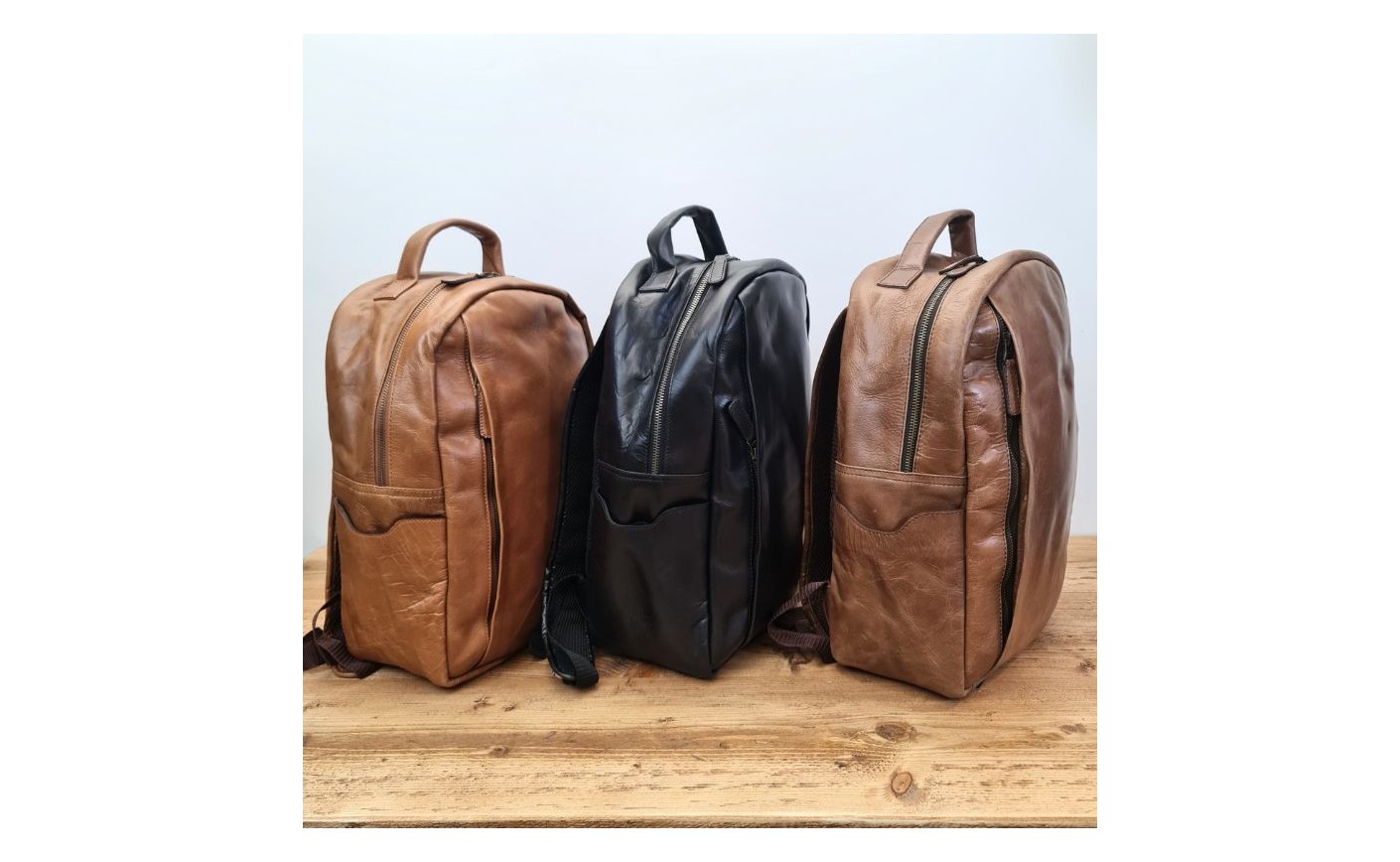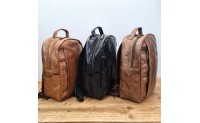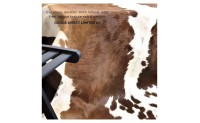
Leather bags are a classic accessory that has stood the test of time. From the earliest days of human civilization to modern times, leather bags have undergone various transformations and have emerged as an essential fashion item. In this article, we delve into the history of leather bags and explore their significance in the fashion industry.
Introduction
Leather bags are a type of bag made from animal hide, particularly cows. They come in a variety of sizes, shapes, and styles, and are generally sturdier and more durable than other types of bags made from synthetic materials.
The Emergence of Leather Bags:
Early history of leather bags:
The use of leather dates back to prehistoric times when ancient humans made bags out of animal hides for carrying various materials. These bags were primarily used for utilitarian purposes rather than fashion. They were also used for storage and transportation of goods such as food, water, and tools.
Evolution of leather bags from utility to fashion items:
As people started to settle down and fashion became a form of self-expression and identity, leather bags began to evolve from a utility item to a fashion accessory. As civilizations developed, leather bags became more sophisticated and intricate in design.
Popular types of leather bags in the past:
Some popular types of leather bags from history include the saddlebag, pouch, and satchel. Saddlebags were used for carrying things on horseback, whereas pouches were used for holding coins and small items. Satchels, originally made for carrying books, eventually became popular for everyday use.
Leather Bags in the Industrial Era:
Mass production of leather bags:
During the industrial era, mass production of leather bags became possible due to technological advancements. The advent of assembly line manufacturing allowed for the production of affordable leather bags in large quantities.
Influence of Art Deco and Art Noumea on leather bag design:
The Art Deco and Art Noumea movements greatly influenced the design of leather bags during this time period. These movements were characterized by ornate and intricate designs, which were often incorporated into leather bag designs.
Famous designer leather bags:
Many famous designers emerged during this era, including Coco Chanel, who introduced the "2.55" bag in 1955. This iconic bag is still highly sought after today and is a testament to the enduring appeal of leather bags.
Leather Bags in the 20th Century:
Leather bags in the cultural revolutions of the 60s and 70s:
Leather bags became a symbol of rebellion and counter-culture during the cultural revolutions of the 60s and 70s. They were popular among rock musicians and their fans, who saw them as a way to express their anti-establishment beliefs.
Iconic leather bags in popular culture:
Many iconic leather bags have appeared in popular culture over the years, from the Doctor Bag in "The Godfather" to the Birkin Bag made famous by actress Jane Birkin. These bags have become as much a part of pop culture as they are a fashion statement.
Leather bags in high fashion and luxury brands:
High fashion and luxury brands like Louis Vuitton and Gucci have embraced leather bags and made them a part of their signature collections. These brands use the finest quality leather and craftsmanship to create unique and luxurious pieces that truly stand out.
Leather Bags in Modern Fashion:
Contemporary leather bag designs:
In modern fashion, leather bags have become more innovative and diverse in design. They come in a variety of styles, from traditional to avant-garde, and are often made with non-traditional materials like fur or exotic animal skins.
Innovative leather bag materials and techniques:
New materials and techniques used in leather bag production have allowed for more creativity in design. Laser-cutting, 3D printing, and even upcycling have all been used in the creation of unique leather bags.
Leather bags in Sustainable Fashion:
Sustainability has become a growing trend in fashion, and leather bags are no exception. Many designers are now using eco-friendly leather, such as vegetable-tanned leather, and promoting ethical practices in their production.
Why Leather Bags Remain Timeless:
Durability and longevity of leather bags:
Leather bags are considered a worthwhile investment due to their durability and longevity. With proper care, a leather bag can last for decades and even become a treasured family heirloom.
Versatility of leather bags:
Leather bags are versatile and can be dressed up or down. They are perfect for both casual wear and formal occasions. Additionally, leather bags come in a variety of sizes, making them useful for a range of purposes.
Importance of quality craftsmanship in leather bags:
Quality craftsmanship is essential in leather bag production to ensure that the bag lasts a long time. Attention to detail and the use of high-quality materials are key factors in creating a lasting and well-made leather bag.
Emotional attachment to leather bags:
Leather bags often hold sentimental value and can become a treasured possession. The emotional attachment that some people have with their leather bags contributes to their timelessness and enduring appeal.
The Future of Leather Bags:
Leather bags in the digital age:
With the rise of e-commerce and online shopping, leather bags are more accessible than ever before. People can easily browse and purchase leather bags from the comfort of their own homes.
Leather bags as a status symbol:
Leather bags are often associated with luxury and status, and this trend is expected to continue in the future. High-end brands will continue to produce one-of-a-kind leather bags that are highly sought after by fashion aficionados.
The impact of sustainability on leather bags:
Sustainability is expected to become even more important in the future, and leather bags will continue to evolve to meet these demands. Brands will focus on using eco-friendly materials and reducing waste in their production processes.
What's next for leather bags?
Leather bags will continue to evolve and innovate as new materials and techniques are developed. It's hard to predict exactly what's next for leather bags, but one thing is for sure: their timeless appeal shows no signs of waning.
Conclusion:
Leather bags have a rich history and have become a staple in the fashion industry. From their early origins as utilitarian items to their current status as luxury accessories, leather bags have stood the test of time. Their versatility, durability, and emotional appeal have made them an enduring symbol of style and fashion.
FAQs:
What is the oldest leather bag ever discovered?
The oldest leather bag ever discovered dates all the way back to 3300 BC. It was found in a cave in Armenia and is thought to have originally held tools or other items.
Are leather bags environmentally friendly?
Leather bags can be environmentally friendly if they are produced using ethical and sustainable practices. Many designers are now focusing on eco-friendly materials and production methods in response to consumer demand for environmentally friendly products.
Is it better to invest in expensive leather bags?
Investing in an expensive leather bag can be a worthwhile purchase if you plan on using the bag for a long time. High-end brands often use high-quality materials and craftsmanship in their bags, ensuring their longevity.
Can leather bags be customized?
Yes, leather bags can be customized to your preferences. Many brands offer personalization services, where you can add monograms or other customizations to your bag.
How can you take care of leather bags?
Taking care of your leather bag is essential to ensure its longevity. You can use leather conditioners and cleaners to keep the leather soft and supple, and avoid exposing the bag to water or extreme temperatures.



Leave a Reply Cancel Reply